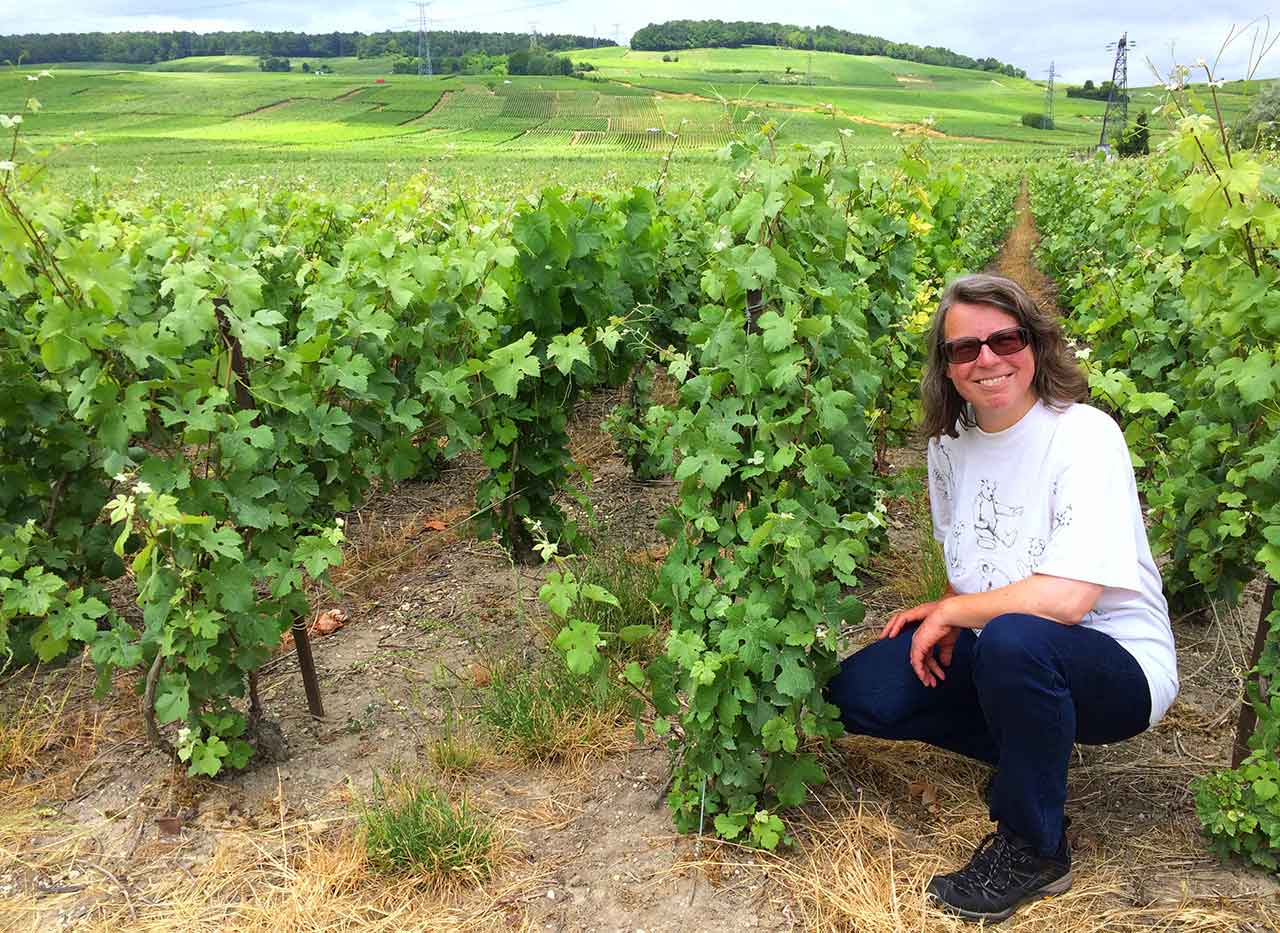Parkerized
Wine with a style supposedly influenced by wine writer Robert Parker, tending to have bold fruit flavours and a higher alcohol content.
Peer Group
Groups of wines whch are related, for example by vintage, region, producer.
Peppery
Wine tasting term indicating that the wine has the pungent, spicy aromas and flavours of black pepper.
Perlant
French word for wine with a gentle fizz.
Perfume
The wine's aroma.
Pétillant
French word for wine with a gentle fizz - a semi-sparkling wine.
Petit château
A small wine estate in Bordeaux.
pH
A measure of a wine's acidity. Lower pH means higher acidity. White wine pH is generally 3.0-3.4, and red wines are pH 3.3-3.6. For context, lemon juice is pH 2 and water pH 7.
Phenol/phenolic
Chemical compounds found in grape skins, flesh, seeds and stems which contribute to wine colour, texture and flavour.
Phenolic ripeness
When grapes are fully ripe, having undergone important chemical changes.
Phylloxera
The vine aphid, which attacks the roots of the vine. After an epidemic in the 1800s European vines were grafted to Phylloxera-resistant American root stocks.
Phytoalexin
Chemical compounds including resveratrol which are part of a grape's defence mechanism against disease. Resveratrol may have health benefits.
Piccolo
Small wine bottle, equivalent to a quarter of a normal bottle.
Piedmont
Wine region in north west Italy where Barolo and Barboresco are made.
Pigéage
Process of 'punching down' the cap of grape skins and stems which floats on the wine during fermentation. This allows extra colour and flavour to be extracted.
Pinot Blanc
White wine grape, a genetic mutation of Pinot Noir.
Pinot Gris
Widely grown white wine grape variety. The grapes are greyish or brownish, and in some wines the grape solids are left in contact with the fermenting juice to impart the colours to the wine.
Pinot Noir
Red wine grape variety. Noir is French for black, and pinot may refer to the fact that the grapes grow in bunches shaped like a pine cone.
Pinotage
South African red wine grape, a cross between Pinot Noir and Hermitage (known as Cinsaut in Europe). The name is a combination of Pinot and Hermitage.
Piquant
Sharp and tart flavour.
Pissato
Italian term for straw wine, where the grapes are dried before fermentation.
Plafond Limité de Classement
Policy allowing French wine producers to exceed production limits in good years by up to 20%.
Plonk
Dismissive term for cheap wine of low quality. Originally an Australian term, possibly derived from the French blanc, meaning white.
Plummy
Wine with a flavour of plums.
Podere
Italian word for a wine estate.
Pomace
The freshly-pressed grapes, including the skins, flesh, seeds and stems.
Polyphenols
Chemical compounds found in grape skins, flesh, seeds and stems which contribute to wine colour, texture and flavour.
Pop and pour
Open a wine and pour it straight into a glass, without decanting.
Port
Portguese fortified wine from the Oporto region.
Portugieser
German and Austrian wine made from the Blauer Portugieser grape. Little evidence can be found to support any connection with Portugal.
Pourriture noble
Italian term for noble rot
Powerful
Wines with strong, concentrated flavours and strong tannins are sometimes described as powerful.
Prädikat
German wine classification based on the ripeness of the grapes at harvest.
Prädikatswein
German wine classification meaning a quality wine with specific attributes. The Qualitätswein mit Prädikat (QmP) classification was replaced by Prädikatswein in 2007.
Premier Cru
French for 'first growth', signifying fine wines and high-class wineries. The term has a specific, controlled meaning in some wine regions such as Bordeaux.
Premox
Premature oxidation, a fault found in white wines which can age more rapidly than expected leading to a dark colour and unpleasant flavour.
Pressing
Extracting juice from the grapes by squashing them. Traditionally done by trampling the grapes under foot in a vat, but more often these days using mechanical methods.
Primary aromas
Aromas derived from the characteristics of the grapes, rather than the winemaking process.
Primat
A large wine bottle with a capacity of 27 litres, equivalent to 36 normal bottles.
Primeur
French term for wine bought before winemaking is complete.
Primitivo
Dark-skinned grape grown in Italy and Eastern Europe, and in the Americas where it is known as Zinfandel.
Produttore
Italian word for a wine producer
Propriétaire
French word for the owner of a winery.
Protected Designation of Origin (PDO)
EU wine classification indicating that the wine is from a specific region and of regulated quality.
Protected Geographical Indication (PGI)
EU wine classification indicating that the wine is from a specific region but with less stringent regulation than PDO.
Pruning
Cutting back grape vines to encourage new growth and the formation of fruit.
Pulp
The flesh of the grape.
Pump over
Wine making process where the fermenting juice is pumped from the bottom of the vat and back into the top, where it mixes with the floating cap of grape solids. This extracts more colour and flavour.
Punch down
Breaking up the cap of solids in the fermenting vat and pushing it down into the juice, so extracting more colour and flavour.
Puncheon
An oak barrel with a capacity of 500 litres.
Punt
The recess in the bottom of a wine bottle.
Purity
Wine tasting term referring to a clean, fresh expression of flavours.
Puttonyos
A measure of sweetness in Hungarian Tokaji wines.






